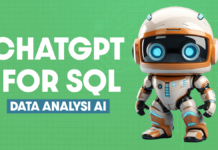Knowing what is Data Warehouse – definition and benefits has become very important today. Data Warehouse is one IT concept that has truly revolutionized the way people do business today. It is one of the most important tools in the arsenal of Business Intelligence which has led to an enhanced form of business analysis and strategic decision making.
Almost a decade ago only high-end businesses with huge turnovers could afford a Data Warehouse solution but nowadays with the availability of cheaper options in the market, many businesses have started implementing Data warehousing solutions on every scale.
Definition of Data Warehouse
“A data warehouse is a relational database that is designed for query and analysis rather than for transaction processing. It usually contains historical data derived from transaction data, but it can include data from other sources. It separates analysis workload from transaction workload and enables an organization to consolidate data from several sources.”
~Oracle docs
Data Warehouse: Great Data Management Solution!
A data warehouse is not just a form of archiving and accessing corporate data. It is designed as a subject-oriented repository that provides enterprise-wide access to information at various organizational levels. Data warehouse tools are not designed solely for the purpose of answering complex data queries but are also capable of providing quick, accurate and sometimes discerning information solutions to the user.
In order to make data warehouse concepts more palatable for you let me break down its definition in smaller points. So, Data warehouse is an informational environment that performs the following tasks:
- Renders a fully integrated view of the enterprise
- Provides easy access to the historical as well as current information for the purposes of decision making.
- Ensures the consistency of the enterprise-wide information.
- Makes it possible to conduct decision-support transactions without disturbing the operational systems.
- Provides a source of information that is both flexible as well as interactive.
Data Warehouse Benefits And Characteristics!
William Inmon also known as the father of data warehousing, had set forth some characteristics of the data warehouse. These are as follows:
- Data warehouse is subject-oriented. This means that one can analyze subject-specific data. For example, if a manager wants to know which product performed the best last year then he could query the data warehouse for sales data. Hence here sales becomes the subject matter.
- Data warehouse is integrated. Since it is an information delivery system hence information from various sources are collected and stored in a warehouse. It then integrates all the data to make it consistent and useful for the purposes of strategic business decision making.
- Information in a data warehouse is non-volatile meaning it is of permanent nature and doesn’t change with time. This particular characteristic is very important in order to analyze business trends for further decision making.
- Data warehouse is time variant. The huge amounts of data archived in a data warehouse help in discovering trends over time. This focus on changes that come over time makes a data warehouse time variant.
Approaches To Building A Data Warehouse!
Due to a tremendous increase in the demand for data warehousing solutions, it has become a vast subject of study. It is out of the purview of this blog article to discuss all the aspects of designing and architecture of a data warehouse. So to be precise there are two approaches to building a Data Warehouse:
- Top-down – According to this approach the complete data warehouse is designed and build first and after that data marts are created for as per the requirements of specific group of users. We will discuss about data marts definition and concepts in the next blog article.
- Bottom-up – This is just the reverse of the earlier approach where the Data marts are first created according to the needs of various departments in an enterprise which are then combined together to build-up a comprehensive data warehouse.
Let’s Talk About Feasibility Of Both Approaches
The main advantage of the top-down approach is that it provides an enterprise view of the data in the corporate scenario with centralized rules and control. However, building a data warehouse in this manner may prove to be time-consuming leading to increasing costs. Whereas taking up the Bottom-Up approach may save a lot of time and money since it entails a quicker and easier implementation of small manageable data marts. Though this approach has less risk of failure it diffuses the redundant data in each data mart. Even the inconsistencies of the data are also permeated through this approach.
Ultimately the approach for each enterprise varies according to the requirements and specifications. Hence in order to find the perfect fit for your organization one needs to analyze the reasons for building a Data Warehouse.
Be as it may Data Warehousing solutions have spread far and wide and is being used rampantly for making strategic business decisions. Each year new players are joining this thriving industry and are worth looking out for.












